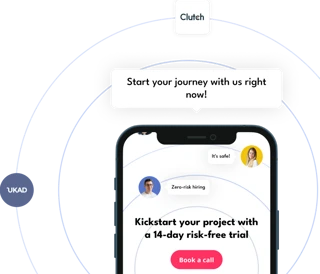Application security isn’t a feature or an advantage but rather an essential and necessary element. A security breach can affect a company financially but even more importantly can wreck its reputation. That’s why app security should be a priority during development.
While we’re trying our best to make the app intuitive, innovative, and beautiful, security breaches to the tune of millions of dollars are being discussed all over the news. Mobile applications are frequently used to share confidential information that could easily be attacked by cybercriminals.
One hack of personal data is enough for malicious actors to know your name, age, home address, bank account numbers, and even your present location to within a few meters. And the new General Data Protection Regulation (GDPR) that were established by May 2018 made this even more serious as many organisations started to examine their apps for potential vulnerabilities that could cause loss of sensitive data.
Every second minute, popular apps are transferring sensitive data that hackers are hunting for. Understanding the risks, mobile apps developers should make every effort to protect their users and customers.
Here are 10 ways to increase the security of your applications.
Write safe code
Bugs and vulnerabilities in code are usually the first weaknesses targeted by cybercriminals. Reverse engineering and manipulating code are possible if the publicly accessible copy of your application’s code gives criminals the chance to reverse engineer it and turn it into malware. According to research by McAfee, global cybercrime is estimated to cost $600 billion in 2018.
Pay attention to code security from the first day of development and strengthen the security of your code as you work. Obfuscate and shorten code, making it harder to reverse engineering. Regularly test and fix bugs as soon as they’re detected. Create code that’s easy to update and fix. Make sure that your code is easy to maintain and can be quickly updated in case of the breach. Use code hardening and code signing.
Encrypt all data
Each piece of data transmitted through your application must be encrypted. Encryption turns ordinary text into a set of characters that are understandable only to those who have the encryption key. Thus, even if data is stolen, attackers won’t be able to use it.
Use high-level authentication
The fact that most security breaches occur due to weak authentication serves as a call to strengthen authentication. Often, authentication is reduced to a simple password or another personal identifier that serves as the only barrier to compromising accounts. Of course, authentication is done by the user, but as a developer, you can encourage users to be cautious and prudent.
Create applications that can only be authenticated using strong alphanumeric passwords that must be updated every 3 to 6 months. Multifactor authentication, combining a static password and dynamic one-time password, is becoming increasingly popular. For ultra-sensitive applications, it’s better to use biometric authentication like retina or fingerprint scans.
Use only authorized APIs
Unauthorized APIs can weaken your app’s security, giving hackers some unexpected benefits. For example, caching authorization information locally helps programmers easily reuse information when they invoke an API, simplifying work with the API. But it gives an additional loophole to hackers. Experts recommend using only centralized API authorization to maximize security.
Implement technologies that detect unauthorized access
Set alerts that report when someone attempts to change the code or add malicious code without authorization. Such technologies can detect unauthorized access and completely block code execution in case of unauthorized changes.
Be careful with libraries
Be very cautious when using third-party libraries. Test code before using it in your application. Libraries can be as dangerous for an app as they are useful. For example, in the GNU C library, there was a vulnerability, which existed for seven years, that allowed attackers to insert malicious code and attack systems. Developers should only use managed internal repositories and learn policy controls during the code acquisition to protect their applications from vulnerabilities in libraries.
Expand correct session processing
Sessions on mobile devices last longer than on PCs. This complicates the processing of sessions for the server. To identify sessions on mobile devices, use tokens instead of device identifiers. Tokens can be withdrawn at any time. This will increase security if a device is stolen or lost. Additionally, enable remote data deletion and remote shutdown from a lost or stolen device.
Apply the principle of least privilege
The principle of least privilege dictates that code should only be executed with the permissions that are absolutely necessary. An application shouldn’t request more privileges than the minimum required for its functioning. If you don’t need access to contacts, don’t request contact information. Don’t create unnecessary network connections. The list continues and largely depends on the specifics of your application, so when you update your code, perform continuous threat modelling.
Use the best cryptography tools and techniques
Key management is an important aspect of encryption success. Don’t hard-code the keys. This increases the risk that they could be stolen. Store keys in protected containers and never store them locally on a device. Some common cryptographic protocols such as MD5 and SHA1 do not meet modern security standards. Use the latest, most reliable protocols such as 256-bit AES encryption with SHA-256 for hashing.
Continuous testing
Work on your app’s security should last as long as the application is used. New threats that require new solutions are constantly emerging. Invest in penetration testing, threat modelling, and emulators to constantly check your application for vulnerabilities. Correct these vulnerabilities with each update and release patches when necessary.
The growing relevance of cybersecurity makes application security a high priority compared to aesthetics and usability.
Follow this guide to provide your apps with the best security management and your customers with peace of mind and satisfaction.


